Costa Rica Adventure

Natural Highlights of Costa Rica

Costa Rica Adventure Family Holiday
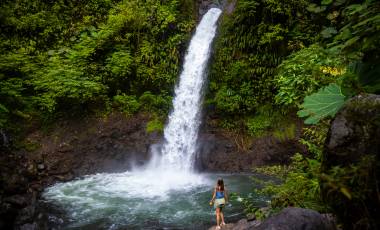
Costa Rica Family Escape

Costa Rica Coast to Coast Ride

Shape your adventure: With Extensions, every beginning and ending is yours to create. Learn More.
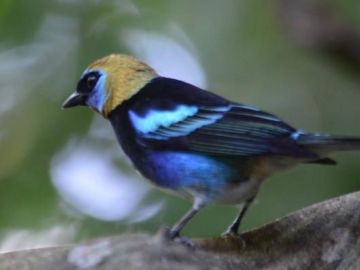
Costa Rica is relatively tiny, as countries go. With a total area of around 19,700 square miles, it’s smaller than the state of West Virginia. That’s precisely what makes the ecotourism hotspot’s legendary biodiversity – which includes approximately 894 species of Costa Rica birds – so impressive.
From the wet plains of the Caribbean coast around Tortuguero National Park to dry northern lowlands, from the mangrove swamps the line the Pacific to the cloud forests of the central mountain range, Costa Rica provides a stunning array of habitats for wildlife.
But the country’s diversity of birdlife can actually be traced back millions of years, to the time when North America and South America were completely disconnected. Over the eons, a series of earthquakes and volcanic eruptions gradually tied the continents together, with Central America becoming a sort of land bridge between them.
Avian species from both the north and south were drawn to the lush neotropical climate in the middle. As a result, there are now more species of Costa Rica birds than there are in the United States and Canada combined. These include approximately 600 resident species, of which 19 are threatened and eight are endemic.
Here’s a brief introduction to some of the myriad of bird species you should watch for during your Costa Rica tour:
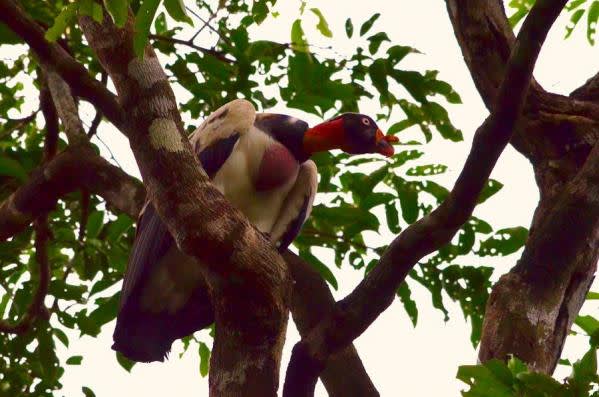
Ranging in size from the tiny Pearl Kite (nine inches long, weighing just three oz) to the massive King Vulture (which can reach over 10 pounds and 32 inches, with a wingspan of six feet), Costa Rica’s raptor species are varied and plentiful.
They all share common traits, such as great vision, strong talons for catching and holding prey, and curved beaks for tearing flesh.
Species from this family you’re likely to see include the Red-tailed Hawk, Swallow-tailed Kite, Crested Caracara, and Osprey. If you visit the Osa Peninsula, be on the lookout for the increasingly rare Harpy Eagle, one of the world’s largest and most powerful Eagles.
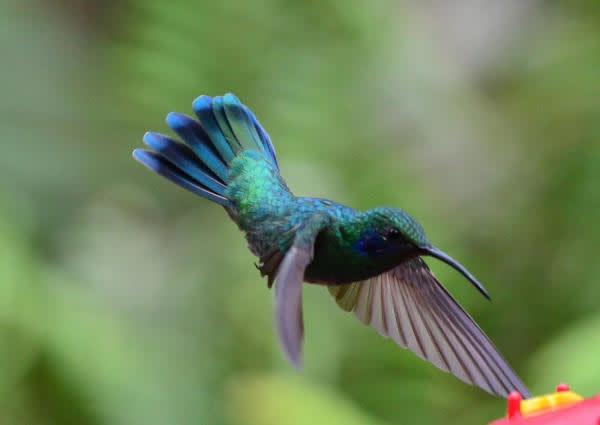
Hummingbirds rank among the world’s smallest avian species, with most measuring just three to five inches. But it’s impossible to imagine a visit to Costa Rica that doesn’t include daily sightings.
They seem to be almost everywhere, flitting amongst the flowering bushes at practically every resort and national park. The feeders at the Monteverde Cloud Forest Reserve gift shop are a great place to see dozens of them in one place.
There are dozens of species found in the country, including the earth-toned Brown Violet Ear, the distinctive Green-breasted Mango, the aptly-named Long-billed Hermit, the brilliantly colored Violet-crowned Woodnymph, and the diminutive Scintillant Hummingbird, the smallest species in Costa Rica.

Found in most of the world’s tropical and subtropical regions, there are nearly 400 species in the parrot family (which includes Cockatoos, Macaws and Parakeets). They all share common traits, including curved bills, strong legs, vivid colors, and an upright stance.
They’re considered among the world’s most intelligent birds, and the ability of some species to imitate human voices and other sounds have made them popular as pets. Unfortunately, this ability has also increased the level of exploitative parrot trapping. Along with hunting, habitat loss, and competition from invasive species, this has led to a sharp decrease in wild populations over the last few decades.
There are dozens of pretty Parrot species you might be able to spot during a visit to Costa Rica, including Crimson-fronted and Orange-chinned Parakeets; Great Green and Scarlet Macaws; and Blue-headed, Red-lored, and White-crowned Parrots.
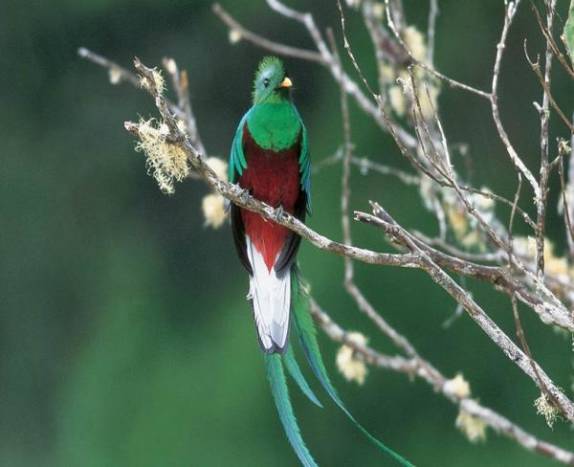
Considered by many people to be among the world’s most beautiful birds, the Resplendent Quetzal is a member of the Trogon family whose range stretches from Chiapas, Mexico south to western Panama. It’s the national bird of Guatemala, and was revered as divine in Mesoamerican mythology (where it was associated with the “snake god,” Quetzalcoatl).
The body of these largely solitary birds measures 14-16 inches long, but males also have a fantastic streaming tail that can measure more than two feet. As their name would seem to indicate, the quetzal’s colors are extraordinary: Their green bodies boast iridescent shades ranging from gold to blue-violet, with red breasts, spiky crests, and tails that include white, black, green, and blue-violet.
They’re primarily found in montane cloud forests, but can be difficult to spot. Look for them feeding on fruit and avocado trees, or listen for their distinctive call, a treble syllable that sounds like a kyow (similar to a whimpering puppy) repeated monotonously.
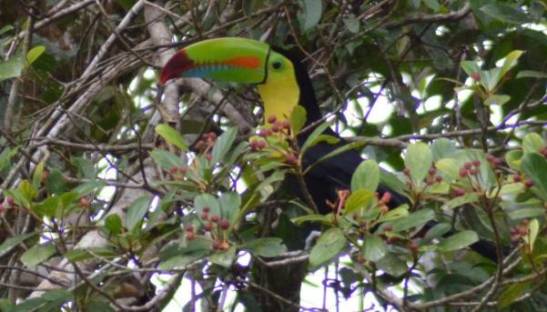
Closely related to American Barbets, Toucans are a family of brightly colored, large-billed birds from the Neotropics. There are about 40 different species in the family, including Toucans, Aracaris, and Toucanets, but certain species of Woodpeckers are also related.
Toucans can range in size from 11 to 29 inches, from 4.6 ounces to 1.5 pounds. But all of them are fairly short and strong, with small wings (since they live in forests and daily travel long distances). Their most distinguishing characteristic is their large, colorful bill, which comes in a diverse array of rainbow colors and features serrated edges that almost look like teeth.
Toucan species you may see feeding on fruits in the rainforest canopy include the Collared and Fiery-billed Aracari, the Emerald and Yellow-eared Toucanet, and the Chestnut-mandibled and Keel-billed Toucan.

These are obviously just a few of the hundreds of Costa Rica birds that keen-eyed birdwatchers may see during our Costa Rica tours. There are dozens of other species of Egrets, Guans, Herons, Honeycreepers, Ibises, Kingfishers, Manakins, Motmots, Owls, Tanagers, and Waterbirds just waiting to be spotted. But hopefully, this gives you a taste of what makes Costa Rica a must-see bucket list destination for bird lovers from all around the world.




